- Overview
- Trip Outline
- Trip Includes
- Trip Excludes
- Gallery
- Reviews
- FAQ
The Everest Panorama Trek in Nepal is a remarkable journey that takes you through the heart of the majestic Khumbu region, offering awe-inspiring views of the world's highest peak, Mount Everest, and its neighboring Himalayan giants.
This trek is an excellent option for those seeking a shorter and less physically demanding adventure, while still immersing themselves in the breathtaking beauty of the Everest region.
The trek begins with a scenic flight from Kathmandu to Lukla, where your trekking adventure commences.
As you traverse the well-trodden trails, you'll find yourself surrounded by a picturesque landscape adorned with lush rhododendron forests, cascading waterfalls, and charming Sherpa villages.
The path leads you through the Sagarmatha National Park, a UNESCO World Heritage site, offering glimpses of diverse flora and fauna along the way.
One of the highlights of the Everest Panorama Trek is reaching Namche Bazaar, a bustling Sherpa town and the gateway to the Everest region.
Here, you'll have the opportunity to acclimatize while reveling in the panoramic vistas of Everest, Lhotse, and Ama Dablam from the Everest View Hotel.
Immerse yourself in the rich Sherpa culture by exploring the local markets, monasteries, and museums.
Continuing on, the trail leads to Tengboche, where the iconic Tengboche Monastery stands in all its grandeur.
This serene and spiritual place offers a perfect backdrop for reflection and appreciation of the majestic Himalayan peaks that surround you.
The journey continues to Khumjung, a Sherpa settlement known for its warm hospitality and the famed Khumjung Hillary School.
Witness the unique blend of traditional Sherpa way of life and modern education initiatives.
Enjoy the breathtaking views of Ama Dablam, one of the most beautiful peaks in the Everest region.
As the trek nears its end, you retrace your steps back to Lukla, cherishing the memories and experiences you've gathered along the way.
Finally, you take a short flight back to Kathmandu, where you can reflect on the incredible adventure you've just completed.
The Everest Panorama Trek is a delightful journey that combines natural beauty, cultural immersion, and breathtaking mountain panoramas.
It offers an opportunity to experience the enchanting Everest region without the strenuous demands of a longer trek, making it an ideal choice for trekkers seeking a taste of the Everest region's wonders.
The Everest Panorama Trek begins with a scenic flight from Kathmandu to Lukla, where the adventure unfolds.
As you traverse the well-marked trails, you'll find yourself immersed in a stunning landscape adorned with vibrant rhododendron forests and cascading waterfalls.
The journey takes you through the renowned Sagarmatha National Park, a UNESCO World Heritage site, where you'll encounter diverse flora and fauna.
Reaching Namche Bazaar, a bustling Sherpa town, offers a chance to acclimatize while soaking in breathtaking panoramas of Everest, Lhotse, and Ama Dablam from the Everest View Hotel.
Immerse yourself in the rich Sherpa culture by exploring the vibrant markets, ancient monasteries, and insightful museums.
Continuing onward, you'll arrive at Tengboche, home to the iconic Tengboche Monastery, nestled amidst awe-inspiring Himalayan peaks.
The journey then leads to Khumjung, where you'll witness the unique blend of traditional Sherpa lifestyle and modern education initiatives.
Finally, as you retrace your steps back to Lukla, you'll be filled with a sense of accomplishment and gratitude, cherishing the memories of an extraordinary trek through the heart of the Everest region.
Itineraries
Day 1
Fly from Kathmandu to Lukla, trek to Phakding (2,652m/8,700ft)
Flight duration: 30 minutes
Trekking duration: 3-4 hours
Trekking distance: 8km
Highlights: Scenic flight, crossing suspension bridges over the Dudh Koshi river, and staying in a teahouse in Phakding.
Day 2
Trek from Phakding to Namche Bazaar (3,440m/11,286ft)
Trekking duration: 5-6 hours
Trekking distance: 11km
Highlights: Entering the Sagarmatha National Park, passing through several Sherpa villages, and reaching Namche Bazaar, the gateway to the Everest region.
Day 3
Rest day in Namche Bazaar for acclimatization
Highlights: Exploring the vibrant market town of Namche Bazaar, visiting the Sherpa Culture Museum, and taking a short hike to the nearby villages for acclimatization.
Day 4
Trek from Namche Bazaar to Tengboche (3,870m/12,694ft)
Trekking duration: 5-6 hours
Trekking distance: 10km
Highlights: Visiting the Tengboche Monastery, one of the largest and most important monasteries in the region, and enjoying panoramic views of Everest, Lhotse, Nuptse, and Ama Dablam.
Day 5
Trek from Tengboche to Namche Bazaar
Descend through forests and charming Sherpa villages, retracing your steps back to Namche Bazaar.
Reach Namche Bazaar and catch a scenic flight back to Kathmandu, bidding farewell to the majestic Himalayas.
Day 6
Trek to Lukla
Day 7
Fly to Kathmandu
- All (international and domestic) airport transfers on a tourist vehicle
-
Twin-sharing/double accommodation in a 3-star hotel for two nights in Kathmandu, including breakfast (Private room accommodation can be organized at an extra cost)
-
Twin-sharing guesthouse accommodation during the trek for 11 nights in the Everest Region with attached toilets in Lukla, Phakding & Namche
- All your standard meals during the trek (Breakfast, Lunch, and Dinner), including one hot drink and seasonal fruits
- Experienced, first-aid trained, government licensed, English-speaking Travel Makers South Asia's trekking guide
- Permits for Sagarmatha/Everest National Park and TIMS (Trekkers' Information Management System)
- Porters during the trek for carrying luggage (1 porter for every two clients)
- Wages, accommodation, meals, gear, insurance, and medications for all staff
- Filtered water in the trails
- Round-trip airfare between Kathmandu/Manthali and Lukla
- One duffel/kit bag, trekking map, sun hat, and trip completion certificate
- A farewell dinner on the last night in Nepal
- All administrative expenses and government taxes
- Meals (lunch and dinner) in Kathmandu
- International flight fare and airport departure tax
- Any beverages, including bottled and boiled water
- Travel insurance along with high-altitude emergency evacuation coverage
- Tips to trekking staff and driver
- Nepal Entry Visa (Visa can be acquired easily after you arrive at Tribhuvan International Airport in Kathmandu with a fee of USD 50 for 30 days visa and USD 125 for 90 days visa)
- Personal Trekking gear and equipment
- Any expenses other than the Price Include section
The best time to undertake the Everest Panorama Trek is during the spring (March to May) and autumn (September to November) seasons. These months offer stable weather, clear skies, and favorable trekking conditions.
While prior trekking experience is beneficial, it is not mandatory for the Everest Panorama Trek. The trek is considered moderate in difficulty and suitable for individuals with a good level of fitness and a spirit of adventure.
The Everest Panorama Trek is moderately challenging. It involves several uphill and downhill sections, requiring a decent level of fitness and stamina. Regular exercise and cardiovascular training before the trek can greatly help in preparing for the physical demands of the journey.
Altitude sickness is a potential risk when trekking in the Everest region. However, the Everest Panorama Trek is designed to allow for gradual acclimatization, reducing the chances of altitude-related problems. It is important to follow a proper acclimatization schedule, stay hydrated, and listen to your guide's instructions to minimize the risk of altitude sickness.
You need a Sagarmatha National Park Entry Permit and a Khumbu Pasang Lhamu Rural Municipality Entry Permit. These two permits are mandatory for trekking in the Everest region.
Yes, there are teahouses and guesthouses available along the Everest Panorama Trek route. These provide basic accommodation, meals, and amenities such as hot showers. The teahouses offer a chance to experience the local culture and hospitality of the Sherpa community.
Essential items to pack for the Everest Panorama Trek include trekking boots, comfortable clothing, a warm jacket, a hat, gloves, sunglasses, a good-quality backpack, a sleeping bag, a water bottle, sunscreen, and basic medical supplies. It is recommended to pack light but ensure you have all necessary trekking essentials.
Yes, hiring a guide and porter is optional but highly recommended for a smoother and more enjoyable trekking experience. A guide provides valuable insights, ensures your safety, and helps with navigation, while a porter can carry your heavy backpack, allowing you to trek with less weight.
The Everest Panorama Trek is a shorter and less physically demanding alternative to the Everest Base Camp Trek. While the Everest Base Camp Trek takes you all the way to the base camp of Mount Everest, the Everest Panorama Trek offers panoramic views of Everest and surrounding peaks from lower elevations. The Everest Panorama Trek is ideal for those with limited time or who prefer a less strenuous trek.
Yes, bottled water is available for purchase at teahouses along the trekking route. However, it is recommended to bring a reusable water bottle and use water purification tablets or a water filter to treat tap or spring water. This helps reduce plastic waste and is a more environmentally friendly option.
The last ATM is available in Namche Bazaar, so it is advisable to carry enough cash for your entire trek. Money exchange facilities are also available in Namche Bazaar, where you can exchange major currencies into Nepalese Rupees.
Most teahouses along the Everest Panorama Trek have charging facilities for electronic devices, but they may come at an additional cost. It is recommended to carry spare batteries or a power bank as a backup.
Mobile phone reception is available in certain areas along the trekking route, notably in Namche Bazaar and some higher altitude villages. However, the signal strength and availability of internet access can vary. It's best to check with your mobile service provider for international roaming options or consider purchasing a local SIM card for better connectivity.
Yes, the Everest Panorama Trek itinerary can be customized according to your preferences and requirements. You can add extra rest days, side trips, or extend the trek to include other destinations such as Everest View Trek or Ama Dablam Base Camp. It is recommended to discuss any modifications with your trekking agency or guide.
Both options are possible. It is feasible to trek independently to Everest Base Camp if you have prior trekking experience, good navigational skills, and are well-prepared. However, joining a guided group trek provides numerous benefits, including a support network, experienced guides, organized logistics, and the opportunity to meet fellow trekkers.
Yes, there are alternative routes and side trips that can be incorporated into the Everest Base Camp Trek. Popular options include adding a trek to Gokyo Lakes, visiting the Everest View Hotel, or taking a detour to the beautiful village of Khumjung. These additions provide additional scenic views and cultural experiences.
Some essential items to pack for the Everest Base Camp Trek include trekking boots, warm clothing layers, a good-quality sleeping bag, a waterproof jacket, gloves, a hat, sunglasses, sunscreen, a water bottle, a headlamp, toiletries, and a first aid kit. It's important to pack light but adequately for changing weather conditions.
The budget for the Everest Base Camp Trek depends on various factors such as the season, accommodation choices, and personal expenses. On average, a budget of around $1,500 to $2,500 USD per person is reasonable to cover permits, food, accommodations, guides/porters (if hired), and miscellaneous expenses.
Respecting the local culture and customs is important during the Everest Base Camp Trek. Some key etiquettes include greeting locals with "Namaste," asking permission before taking photographs, dressing modestly, and respecting religious sites and objects. It's also advisable to follow the guidance of your guide regarding local customs and practices.
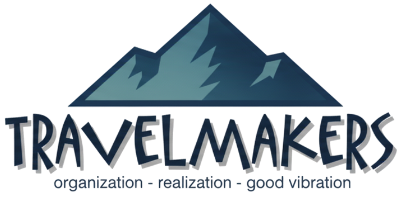



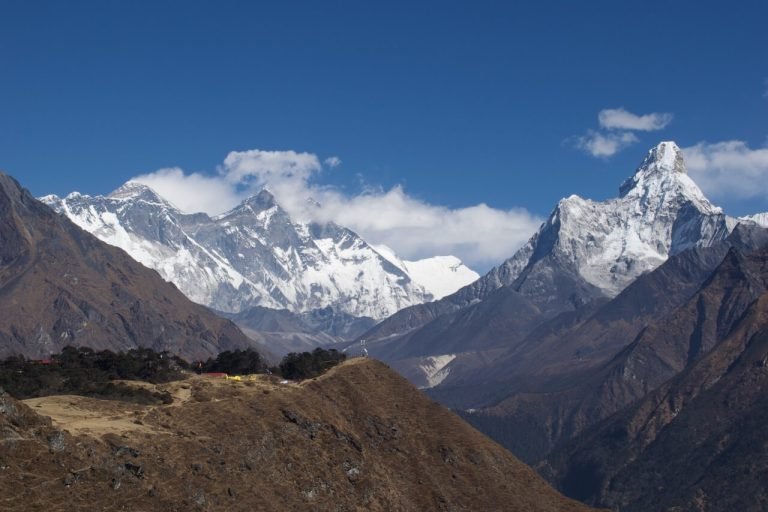




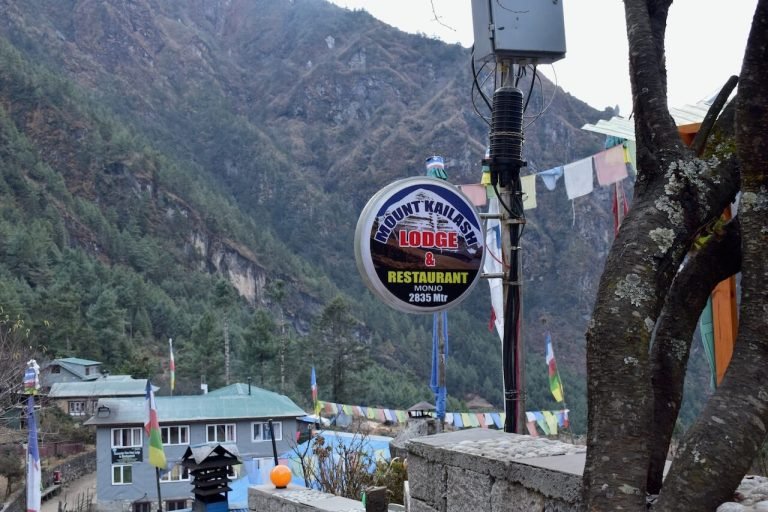
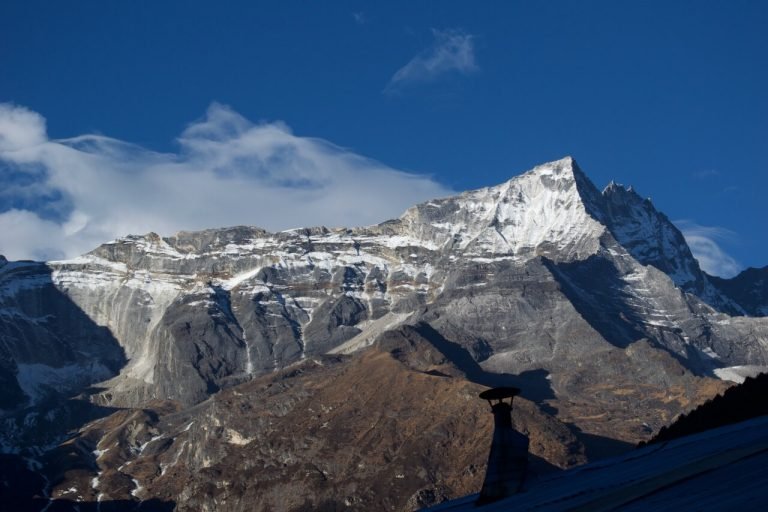
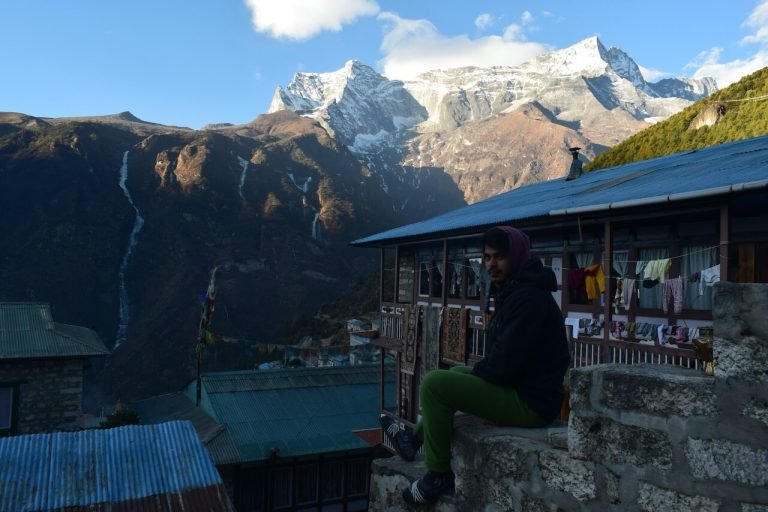




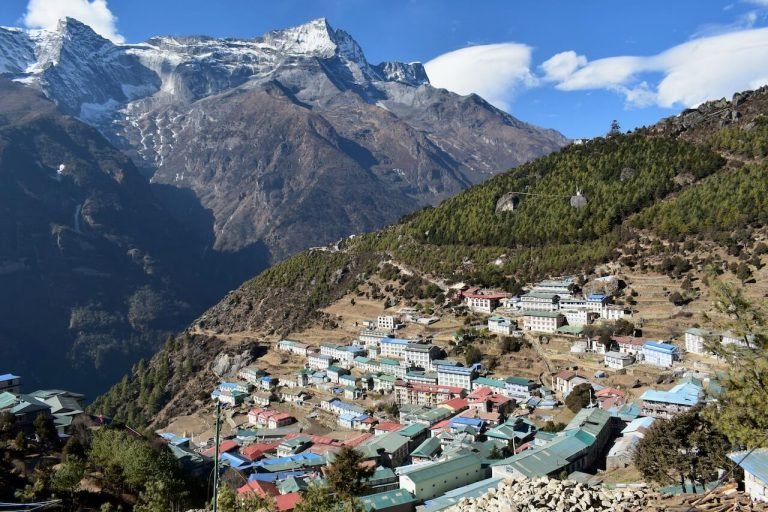


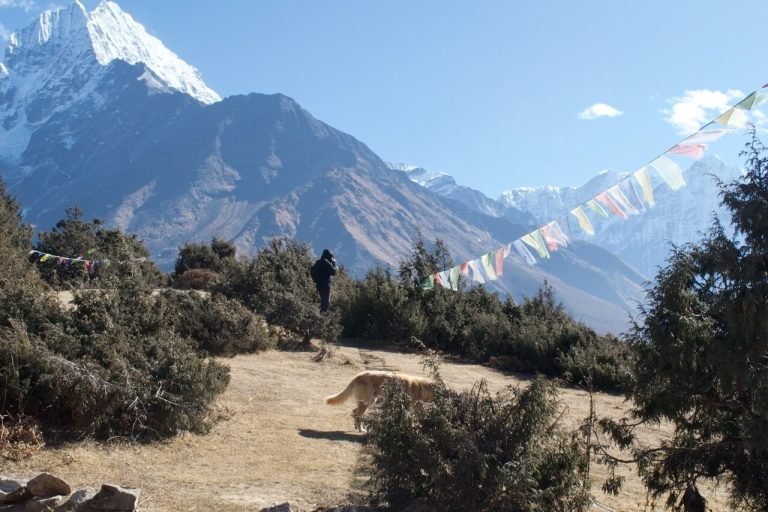
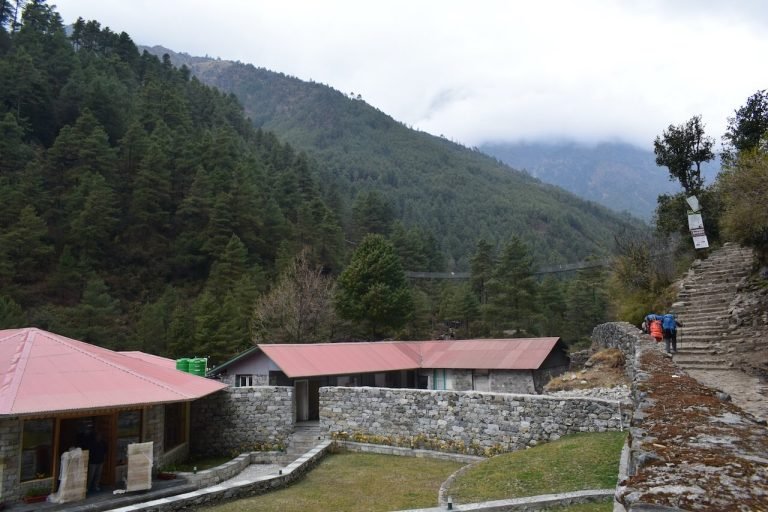
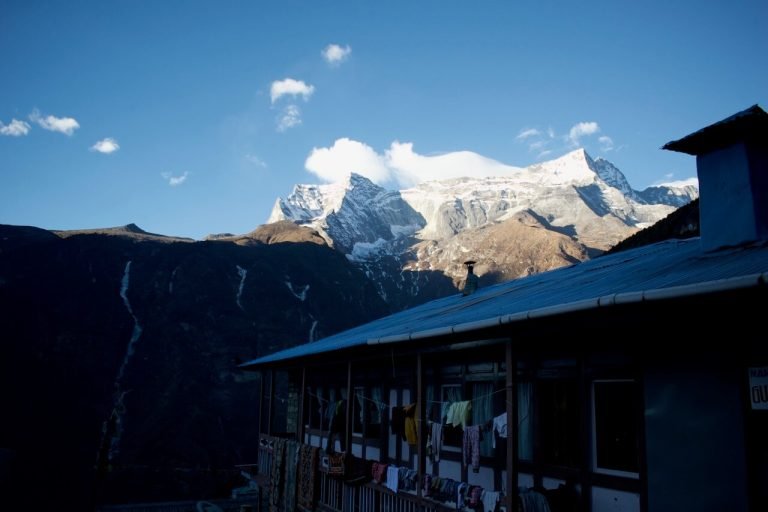
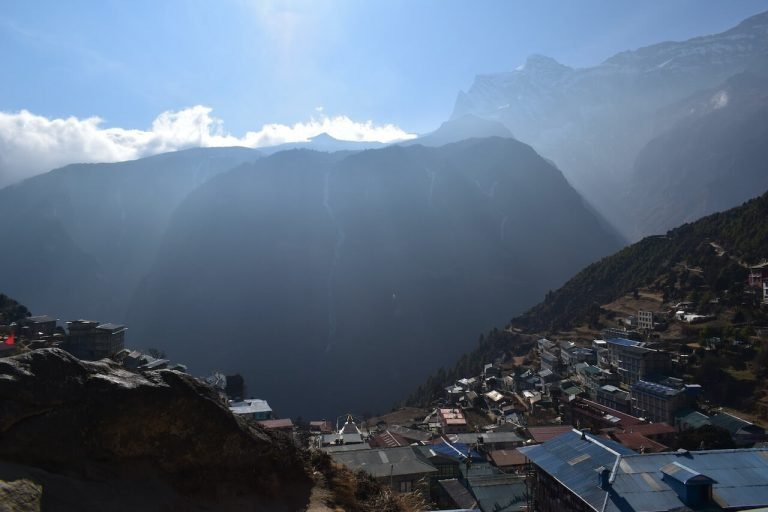
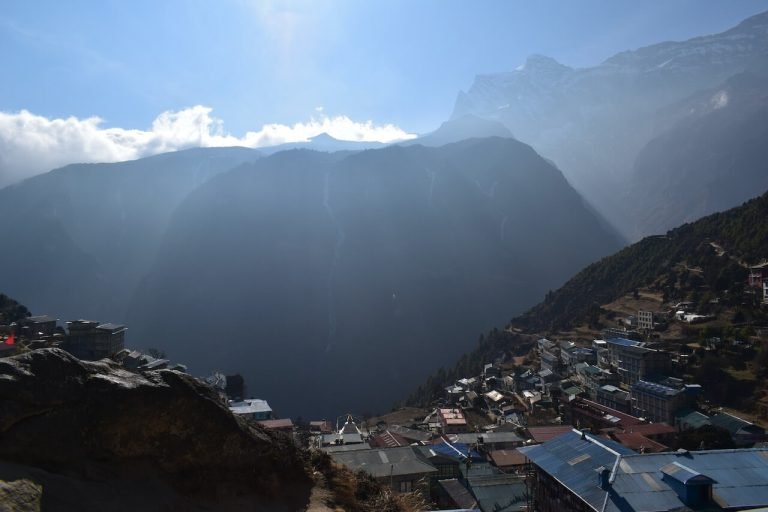

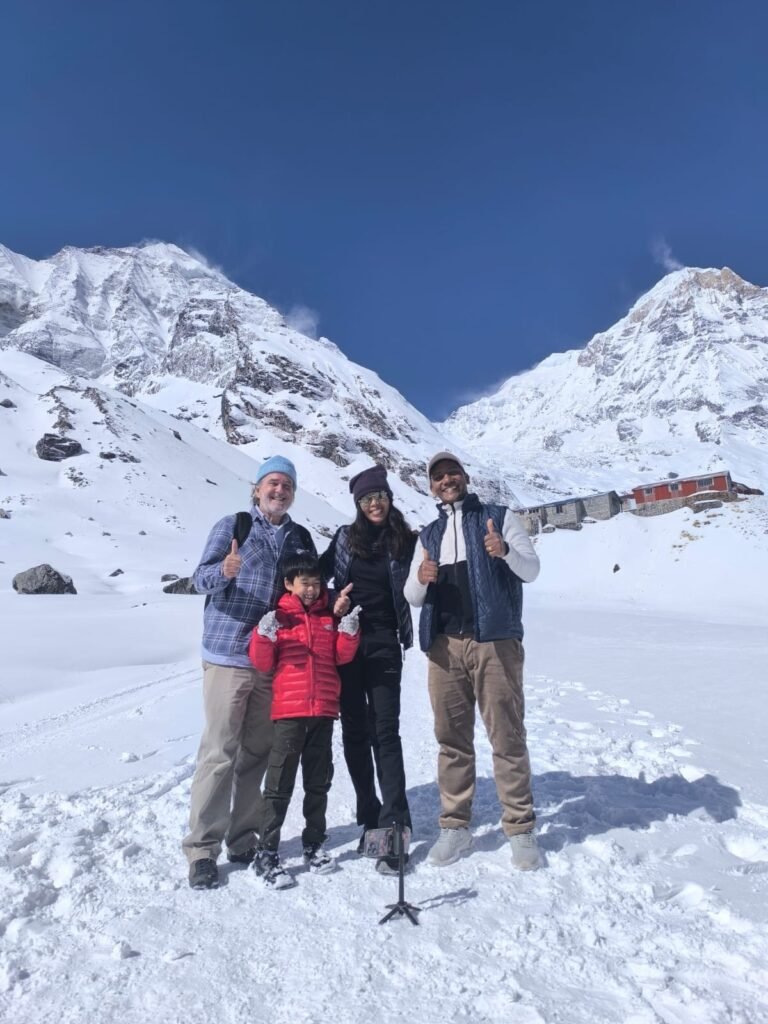
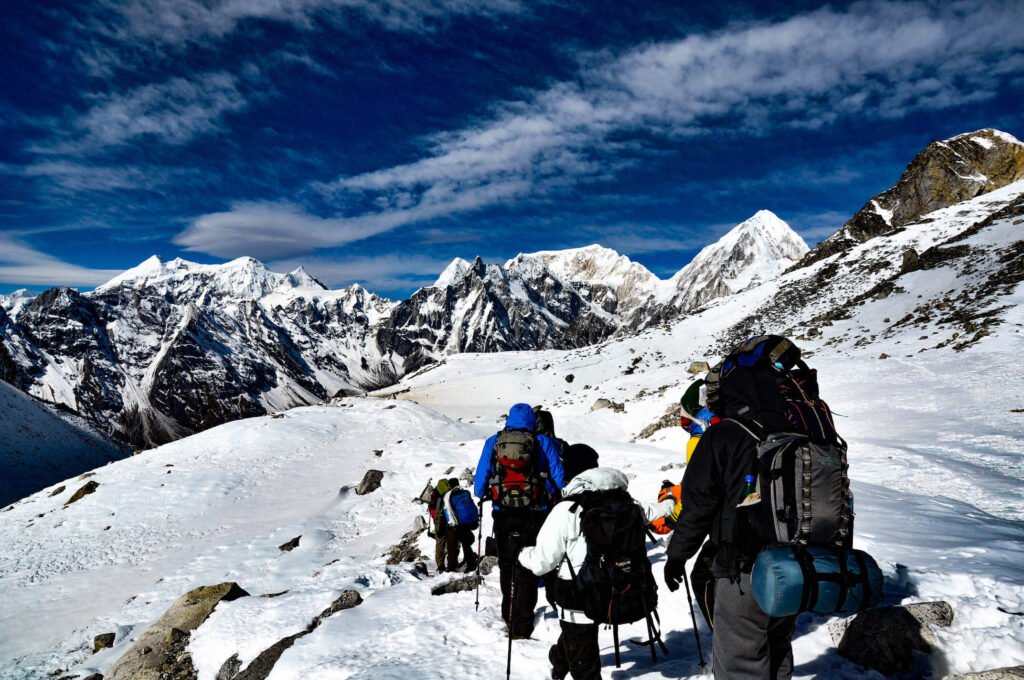
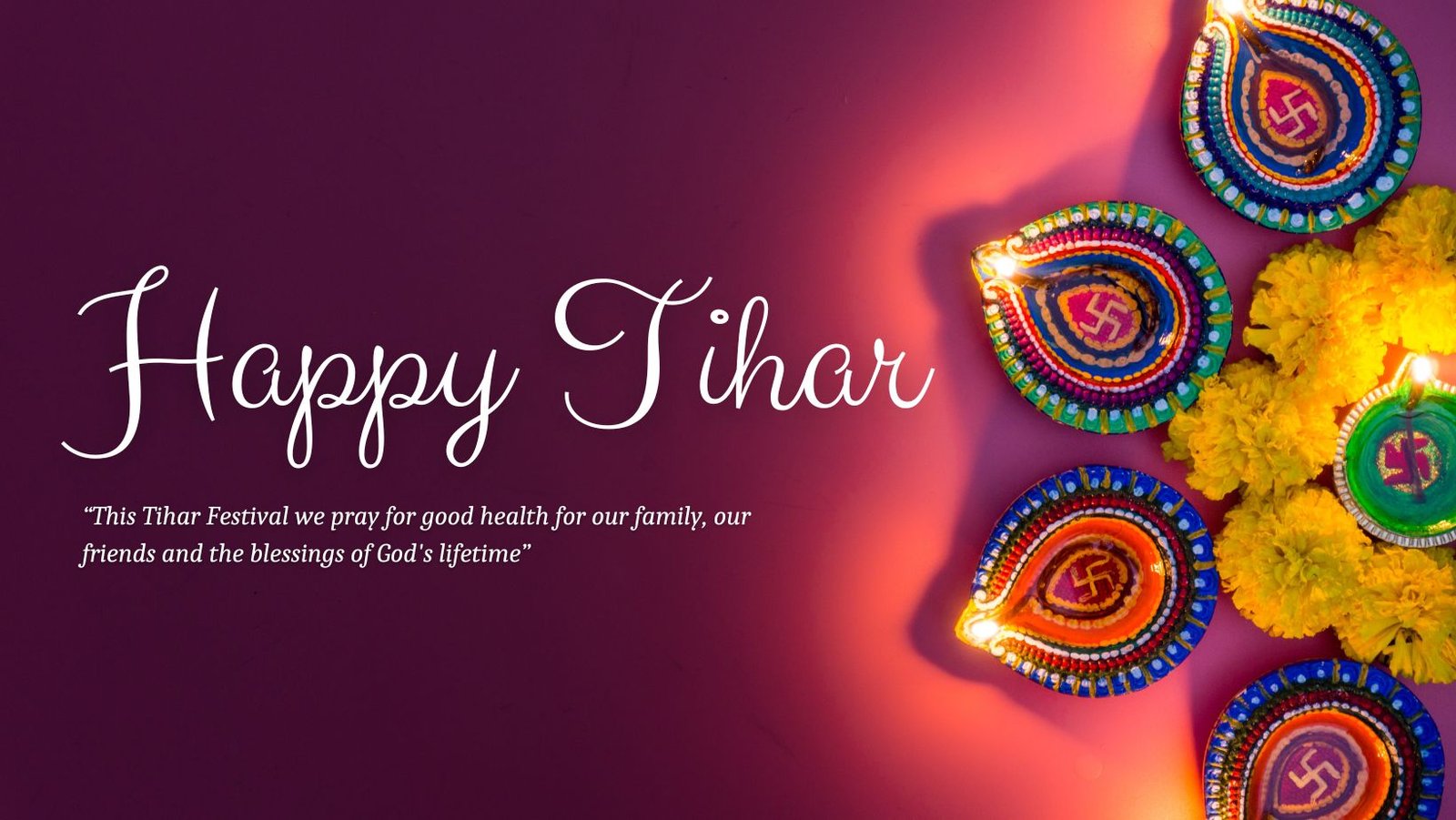
There are no reviews yet.